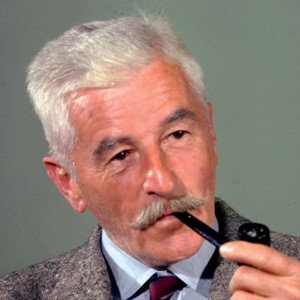 To Robert Shaw Barlow
To Robert Shaw Barlow
C/o Brown Shipley & Co.
123, Pall Mall, London, S.W.1
Paris. June 22, 1936
I have just finished Faulkner’s “Sanctuary” and I think I have understood all the pornographic part, corncob, etc, and the character of Popeye which is like any villain in melodrama, just as Miss Reba and her establishment and her genteel friends entertained after the funeral; all this being very well done, so as to seem . . . life-like, at least to the uninitiated. I found myself also absorbed in the story as a whole, without exactly following the thread of it, which it would have taken me a second reading to disentangle. But frankly I don’t think it worth bothering about. Like all these recent writers, the author is too lazy and self-indulgent and throws off what comes to him in a sort of dream, expecting the devoted reader to run about after him, sniffing at all the droppings of his mind. I am not a psychological dog, and require my dog-biscuit to be clearly set down for me in a decent plate with proper ceremony. But Faulkner, apart from those competent melodramatic or comic bits, has a poetic vein that at times I liked extremely; in describing landscape or sheer images. This matter of images is very interesting, but confused. The image-without-thought poets often jump from the images supposed to appear to a particular observer, as in a dream, to images visible only to another observer, to the author in his omniscient capacity, as if they were the substance of the physical world common to all sane people. But there are no common images; there are only common objects of belief: and confusion in this matter of psychological analysis renders these modern writers bewildering, because they are themselves bewildered.
Faulkner’s language I like well enough when it is frank dialect, or unintended poetry: but I wish he wouldn’t, in his own person, say “like” for “as”, “like they do down South”. And the trick of being brutally simple and rectilinear in describing what people do, or rather their bodily movements, becomes tiresome after a while; especially when these bodily movements have no great significance but again are mere images strung along because they happen to appear to the author’s undirected fancy.
The absence of moral judgements or sentiments helps to produce this impression of conscious automata, wound up, and running round and round in their cages. I think there is biological truth in that view, but we have also a third, a vertical, dimension. We can think: and it is in that dimension that experience becomes human.
From The Letters of George Santayana: Book Five, 1933-1936. Cambridge, MA: The MIT Press, 2003.
Location of manuscript: The Houghton Library, Harvard University, Cambridge MA.
